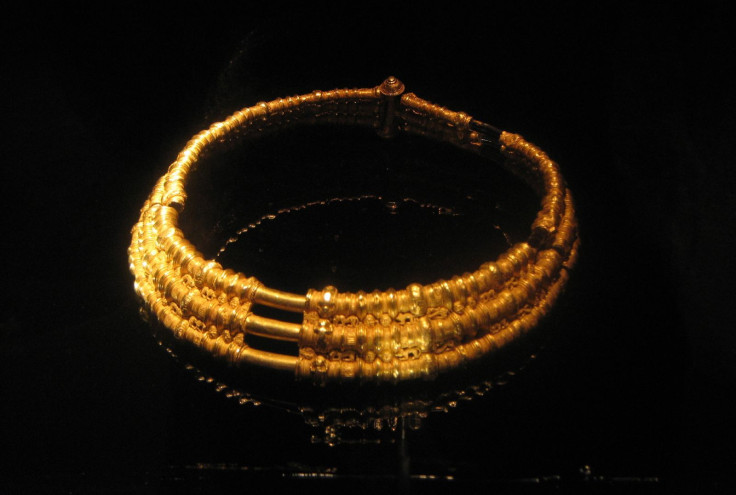Amazing Viking gold discovery: Amateur archaeologists stumble upon invaluable treasure trove in Denmark

Three amateur archaeologists have made the most-interesting discovery that can tickle adventure buds around the world. In what could be the largest treasure trove ever discovered in Denmark, the archaeologists unearthed seven bangles, one of silver and six made of gold, in a field in Vejen Municipality in Region of Southern Denmark on the Jutland peninsula in south Denmark.
The bangles date back to around the year 900 and they have a combined weight of about 900 grams. The find is the largest discovery of Viking gold in Denmark till date. A Viking expert at the National Museum, Peter Pentz, said that finding even one bangle would have been major. But finding seven bangles is unique and extremely special.
“The Viking Age is actually ‘silver age’ when it comes to the discovery of a treasure. The vast majority of treasure contained only silver. If there was gold, it was always a small part, not like here, the majority,” Pentz said in a statement that was reported by eNCA.
Pentz also revealed that the treasure could have been used to reward faithful followers of a Viking leader or to form alliances. Marie Aagaard Larsen, who made the discovery along with her husband Christian Nedergaard Dreioee and friend Poul Noergaard Pedersen, said that that their experience of stumbling upon the treasure trove was “almost unreal.”
When they found the first bangle, they felt like finding gold at the end of the rainbow. But when they discovered six others, they were at the top of the world. The curator of Soenderskov Museum, Lars Grundvad, believes that the seven newly found bangles are connected to a 67-gram gold chain that was found in the same area in 1911.
What made Grundvad connect the two was the Jelling-style by which one of the gold bangles was made. The gold chain from 1911 find was also made in the same style. As the two were found in the same field, there’s a possibility that the two were part of the same treasure trove. Soenderskov Museum may be displaying the bangles before they are sent to the National Museum in Copenhagen for further analysis.
The bangles may have been buried where they were found as some part of a ritual. It is also possible the person(s) who buried the bangles could not retrieve them later.





















